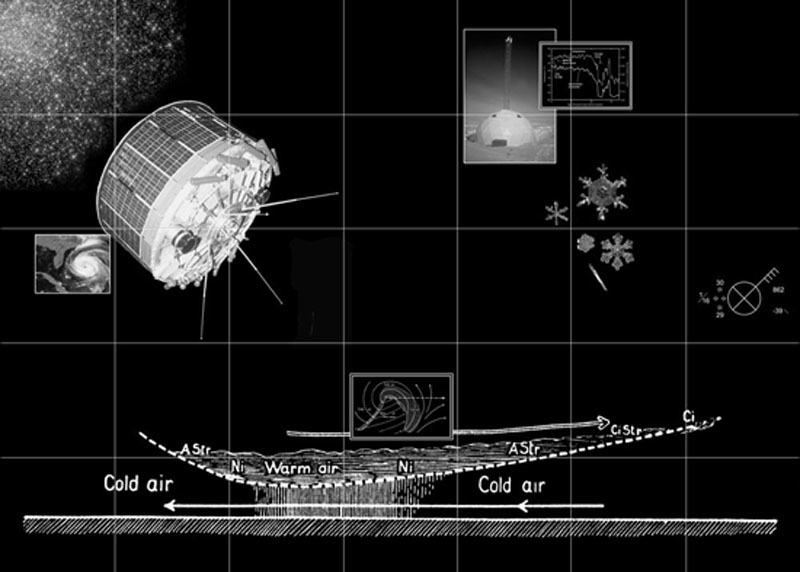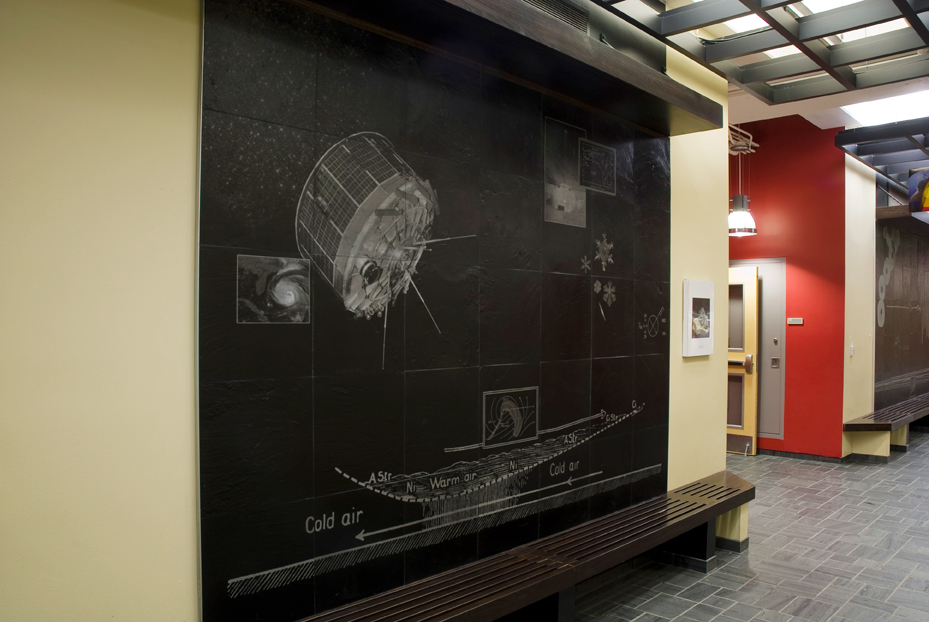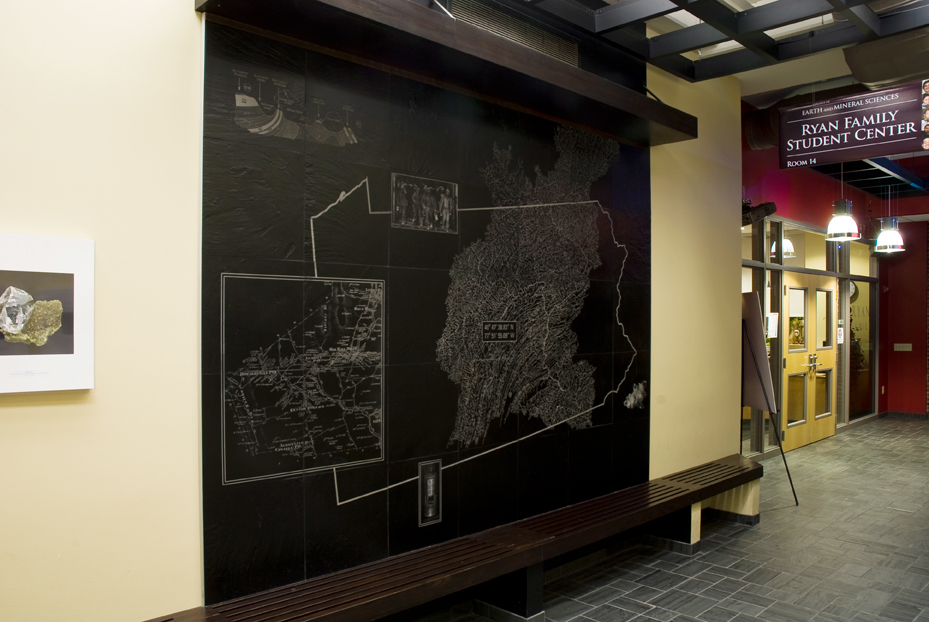The Wall of Earth and Mineral Sciences
420 square feet of history on black slate
420 square feet of history on black slate
I'm sure designers everywhere have one piece in their portfolio of which they are most proud, due to its quality, high profile, content, impact, client, or simply its personal meaning. This mural is that piece in my portfolio. Modeled after the work of artist Larry Kirkland, this mural of laser-etched Pennsylvania black slate is seven feet high and totals sixty feet in length. The images tell the rich history of the College of Earth and Mineral Sciences, encompassing the College’s breadth of research and study, as well as its commitment to education and betterment of mankind. The mural is a permanent and prominent centerpiece in the Museum of the College of Earth and Mineral Sciences, and a symbol of excellence and dedication.

This digital image was produced from the final proof of the mural. This section of the wall represents depth of materials science and coal research. Each short section of the mural is ten feet wide.

The mural is located in a hallway that passes through an open museum space. The sheen on the wall is created by a protective coating that resists most types of graffiti or physical abuse.

This digital image was produced from the final proof of the mural. This section of the wall represents Meteorology.

Benches were added for students to relax before class. This is a very high traffic area, as the hallway gives access to five state-of-the-art classrooms, as well as open and secure museum areas.

This digital image was produced from the final proof of the mural. This section of the wall represents a wider range of information. Nanomedicine, education, energy, and distance education are all features of this section.

At thirty feet in length, this is the longest section of wall, and it opposes the open museum area. Behind this section is the secure area of the museum.

This open area is popular for events, ceremonies, and college activities such as recruiting events. The museum itself attracts bus loads of students from all over the mid-atlantic region.

This section is based solely on Pennsylvania. The expansive gray mass is the Susquehanna River Basin. Also seen are miners, a map that dates back to the 1700s, Pennsylvania quartz, and a miner's lamp. I placed the miner's lamp over the area of Somerset County; the area of the Quecreek Mine Rescue, where nine trapped miners were rescued in July, 2002.

Given that I'm a Pennsylvania native, I took an opportunity to interject a bit of myself into this section of the mural! In the center is my personal contribution - the exact coordinates of the person standing in front of this section of mural! I contacted a surveyor from Penn State's Office of Physical Plant to measure the exact location.

A detail of the materials science section of the mural.

This detail shows the microstructure of a thermal space shuttle tile.

The large illustration featured here is one of the first documented drawings of a cold front.

Different snowflakes as seen under a microscope on the Meteorology section of the wall. The symmetrical and asymmetrical patterns are so amazing, the snowflakes had to go on the wall!

One of three quotes on the large section of wall.

This quote was added at the special request of then Dean of the College of Earth and Mineral Sciences, Eric Barron. The quote represents the vision of the College of Earth and Mineral Sciences. Eric Barron is currently the President of Penn State.

Seen on the Pennsylvania section of the wall is a portion of one of the oldest maps of central PA, dating back to the late 1700s.

The coordinates seen in the center of the PA wall were my personal contribution! The idea was for the viewer to play a guessing game, to discover that the coordinates marked right where they stood to see the wall!
In this photo, masons prepare to remove slate panels from their shipping crate.
As the slate tiles were removed from the crate, the masons organized them on the floor.
On the first day of installation of the wall, I took a vacation day and helped the mason put up the first set of tiles! If I can get my hands dirty, I do it!


